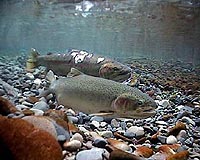 |
London, UK (SPX) May 27, 2010 BBSRC funded researchers at the University of Oxford and Royal Holloway University of London have discovered that the commonly used and naturally occurring bacterial insecticide Bt works best if applied to young plants and is enhanced by the presence of the insect pests. The research is published in the open-access journal PLoS Pathogens. Spraying Bt - the bacterium Bacillus thuringiensis - is a common method for controlling a variety of insect pests and is one of the main approaches to chemical-free pest control in agriculture. Optimising sustainable farming techniques can help meet the challenge of feeding 9 billion people by 2050 using fewer resources and with minimum impact on the environment. Senior researcher Dr Mike Bonsall at the University of Oxford said: "Bt has been used commercially for about 40 years and is readily available to control pest moths and the like, but until now we've known very little about the natural abundance of the bacteria in the environment and what happens when we apply extra bacteria as a means of pest control. It's really important to understand what is happening so that we can, for example, know what factors might have an impact on the insects becoming resistant to Bt." Bt is found naturally in soils and on plants and exists as many different varieties that each have a preference for infecting different organisms. Bt strains that are specific to certain insects rely on being able to infect those insects in order to reproduce. The researchers studied a strain called ST8, which infects the Diamondback Moth - a pest that attacks cabbages, broccoli and related crops - and they found that the population of bacteria (either existing or applied) establishes itself more readily when the insects are present. The team set up several cabbage plots in the field to examine what was happening when there were extra insects and/or extra bacteria added to what was already present. Then they took samples of soil and leaves. For each sample they looked at the genetics of the bacteria to build a profile of which strains of Bt were present and in what numbers. Lead researcher Dr Ben Raymond at Royal Holloway University of London said: "We found that our strain, ST8, is the most common in the environment already and it also seems to be best at getting onto the leaves where it can infect the moths. We think that the ST8 that exists naturally in the farm environment might well be colonising the plant as growing seedlings so it gets the earliest possible opportunity to infect the moths, which of course it needs to do to survive." "This makes sense given that we also found that when there are extra insects in the environment the bacteria actually do much better and can be found in larger numbers. It also shows why spraying the plants, especially young ones, rather than the soil is the best way of using Bt to control insect pests." The research team are also looking at factors that affect the chances of insects becoming resistant to Bt. In particular they are looking at the way the toxin that kills the insect and an antibiotic that Bt produces to get rid of competing strains of bacteria in the insect's gut both impact the evolution of resistance in the insect. Professor Douglas Kell, BBSRC Chief Executive said: "Sustainable solutions to future food security will rely on a thorough understanding of how ecosystems operate. This is a good example where the interactions between different parts of such a system have a significant impact on how we can control pests using biological rather than chemical methods. It is also vital that our ongoing practices with Bt present minimal risk of insects becoming resistant and so work to understand the fundamental biology that happens within this system is extremely important."
Share This Article With Planet Earth
Related Links Biotechnology and Biological Sciences Research Council Farming Today - Suppliers and Technology
 Climate Threatens Trout And Salmon
Climate Threatens Trout And SalmonCardiff, UK (SPX) May 26, 2010 Trout and salmon are among the world's most familiar freshwater fishes, but numbers have fallen over recent decades - in some areas, dramatically. Pollution, habitat loss and over-fishing have all been blamed in the past, but new evidence from Cardiff University shows that climate change could be a major factor, putting both species at risk. The scientists studied populations of youn ... read more |
|
| The content herein, unless otherwise known to be public domain, are Copyright 1995-2010 - SpaceDaily. AFP and UPI Wire Stories are copyright Agence France-Presse and United Press International. ESA Portal Reports are copyright European Space Agency. All NASA sourced material is public domain. Additional copyrights may apply in whole or part to other bona fide parties. Advertising does not imply endorsement,agreement or approval of any opinions, statements or information provided by SpaceDaily on any Web page published or hosted by SpaceDaily. Privacy Statement |